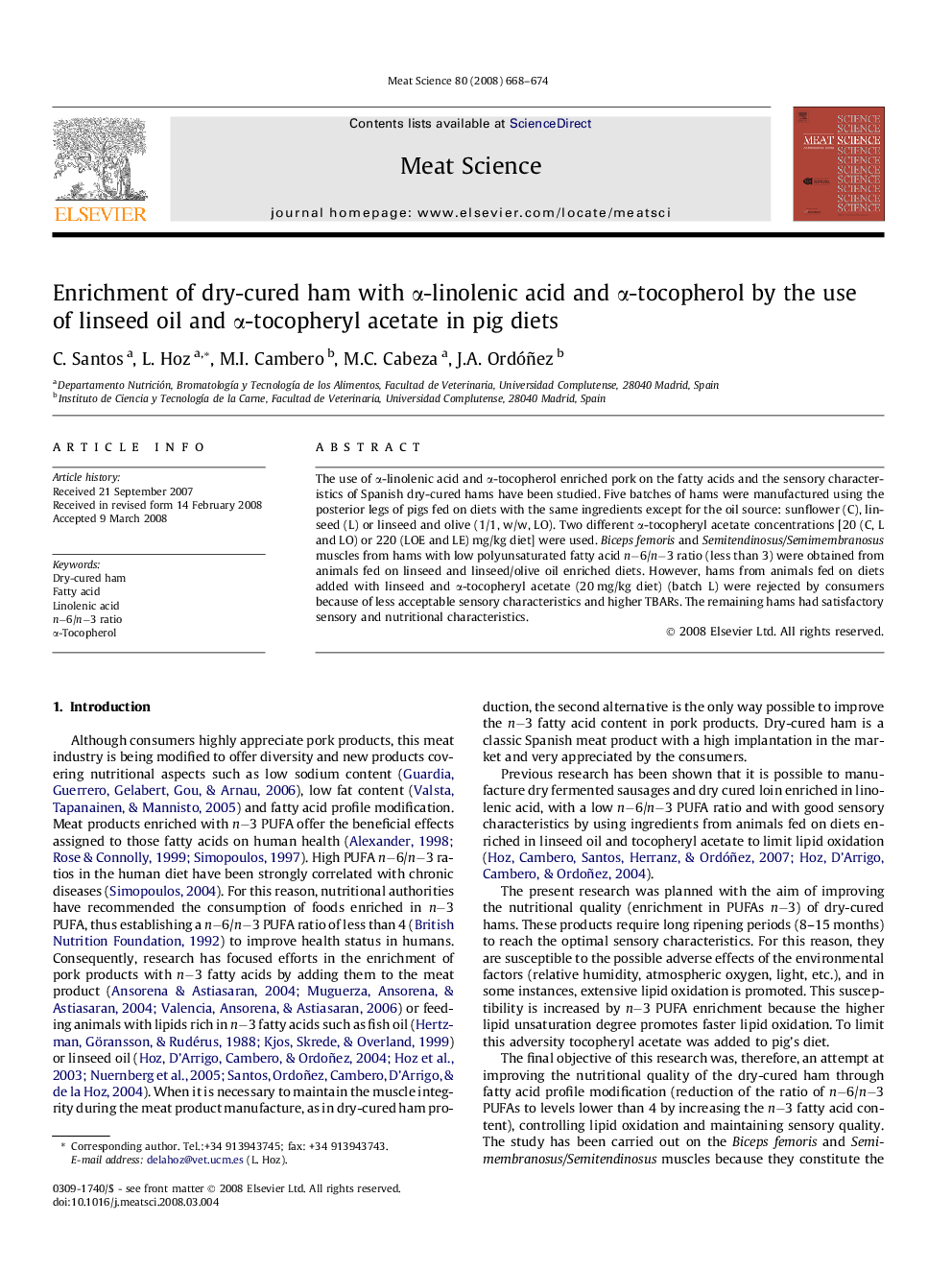| Article ID | Journal | Published Year | Pages | File Type |
|---|---|---|---|---|
| 2451365 | Meat Science | 2008 | 7 Pages |
The use of α-linolenic acid and α-tocopherol enriched pork on the fatty acids and the sensory characteristics of Spanish dry-cured hams have been studied. Five batches of hams were manufactured using the posterior legs of pigs fed on diets with the same ingredients except for the oil source: sunflower (C), linseed (L) or linseed and olive (1/1, w/w, LO). Two different α-tocopheryl acetate concentrations [20 (C, L and LO) or 220 (LOE and LE) mg/kg diet] were used. Biceps femoris and Semitendinosus/Semimembranosus muscles from hams with low polyunsaturated fatty acid n−6/n−3 ratio (less than 3) were obtained from animals fed on linseed and linseed/olive oil enriched diets. However, hams from animals fed on diets added with linseed and α-tocopheryl acetate (20 mg/kg diet) (batch L) were rejected by consumers because of less acceptable sensory characteristics and higher TBARs. The remaining hams had satisfactory sensory and nutritional characteristics.
